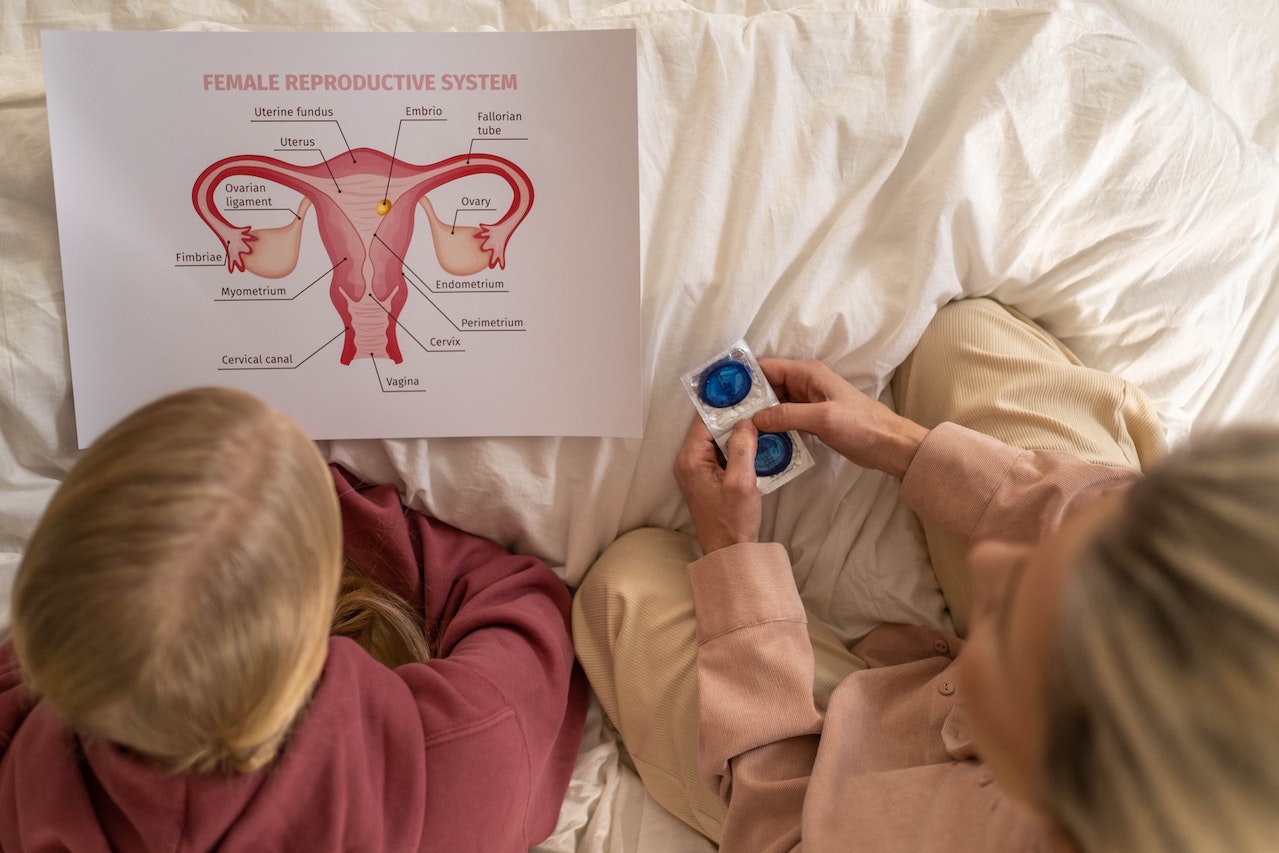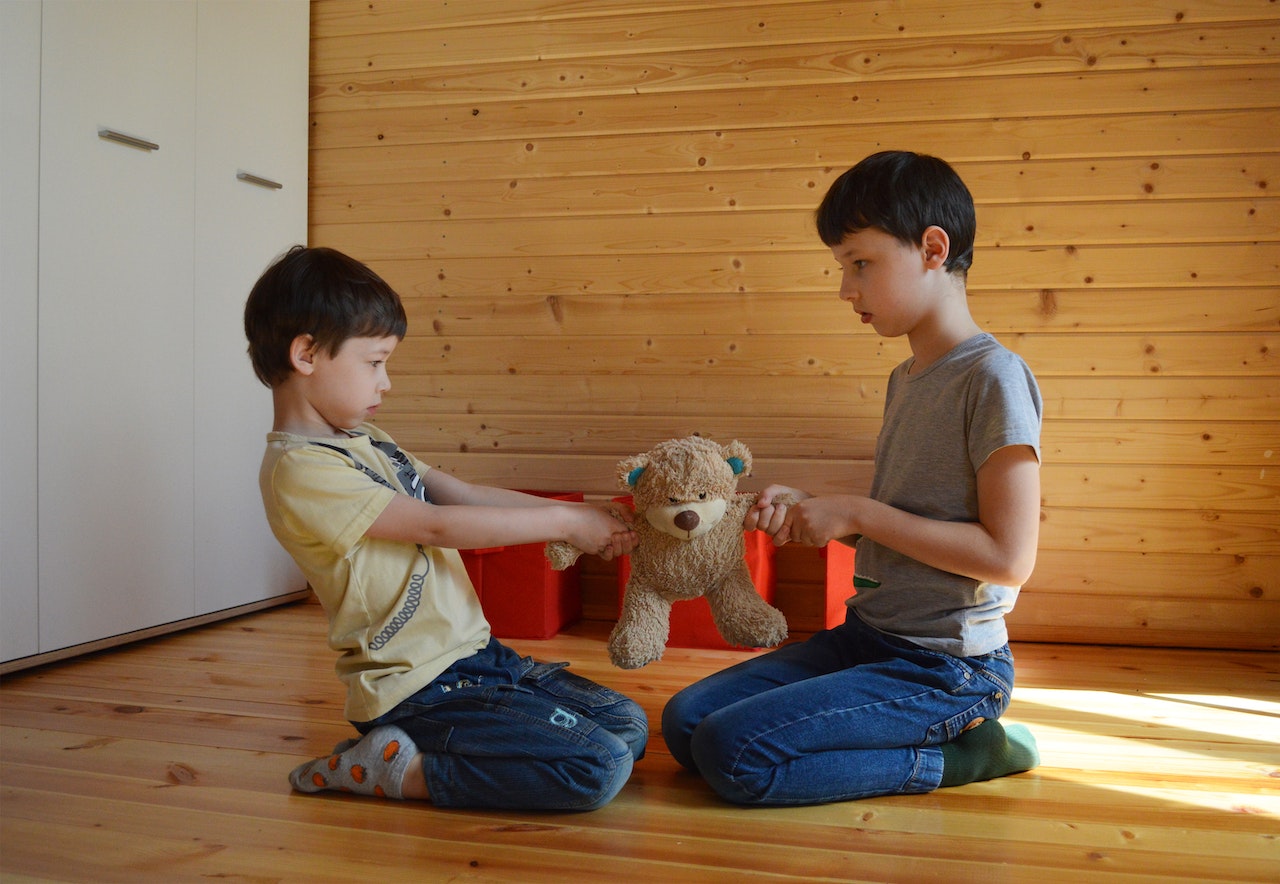Parenting! The job where you’re supposed to have all the answers, even when your toddler asks, “Why is the sky blue?”, and you’re tempted to say, “Because it’s sad, just like I am when you ask me a million questions.”
But alas, as they grow older, the questions change. And before you know it, you’ll be navigating the treacherous waters of “the talk.” Yes, the sex talk. If you’re already breaking into a cold sweat, fear not! We’ve got you covered. Kind of.
1. Choose The Right Moment (But There’s Never Really A “Right” Moment)
First things first. There’s never going to be that perfect moment where birds are chirping, the sun is shining, and your child looks up at you with those wide, innocent eyes saying, “Please enlighten me about the wonders of human reproduction.” Nope. Chances are it’ll be in the middle of a crowded grocery store when they spot a tabloid with a pregnant celebrity and blurt out, “How did THAT happen?” So, be prepared anytime, anywhere.
2. Be Honest (And Hope They Don’t Ask How You Know)
Kids appreciate honesty. And while there’s no need to give them a blow-by-blow (pun intended) of your college escapades, it’s important to be factual. “When two people love each other very much, they go to the magical kingdom where storks grant them a baby” won’t cut it. They have the internet, remember? And you really don’t want them to be getting their facts from there. Trust me.
3. Use the Proper Names for Body Parts (Even if You’re Cringing Inside)
Remember, it’s a “vagina” not a “hoo-ha”, and a “penis” not a “dingle-dangle”. Using cutesy or vague names might save your blushes in the short term, but it could also create confusion. And you don’t want them to start biology class thinking that women have a “sparkle cave.”
4. Keep It Age Appropriate (Because TMI is a Real Thing)
While it’s great to be open and honest, you don’t need to dive into the complexities of relationships, emotions, and the various nuances of human intimacy when they’re just asking where babies come from. A basic, “When a man and a woman want to have a baby, they come together and the man’s sperm meets the woman’s egg” should suffice for starters. And if they ask how? Well, then maybe it’s time for a birds and bees analogy. Or a nice, well-reviewed children’s book on the topic. Anything but a live demonstration.
5. Expect (Many) Follow-Up Questions
Kids are curious. Like, REALLY curious. They’re like little sponges soaking up information, even the stuff you wish they’d forget (like that time you accidentally swore when you stepped on a LEGO). So, expect questions like, “Do grandma and grandpa still do it?” Be prepared. And maybe have a glass of wine handy for after.
6. Use Analogies, But Not Too Many (We’re Talking About Birds & Bees, Not the Entire Animal Kingdom)
While the classic “birds and bees” analogy might sound outdated, sometimes a simple analogy can be a great way to explain complicated concepts to kids. Just remember not to overdo it. You don’t want them walking away thinking babies are made in a similar fashion to how kangaroos hop or how giraffes neck fight. We’re aiming for understanding, not more confusion.
Here are a few analogies you can consider:
- Planting a Seed: This analogy can be useful when explaining conception. “Think of it like planting a garden. A seed (sperm) from a man joins with an egg from a woman, much like how a seed needs soil to grow. When they come together, it begins to grow, and over time, it becomes a baby inside the woman’s womb, just as a seed grows into a plant in the soil.”
- Lock and Key: “The human body is designed in such a way that it fits together like a lock and key. A man has the key (sperm), and a woman has the lock (egg). When they fit together, it can create something new, which is a baby.”
- Baking a Cake: “Think of making a baby like baking a cake. You need ingredients from both the man (sperm) and the woman (egg) to make a baby. When they mix together, it’s like the batter being put in the oven to bake, which is the woman’s womb where the baby grows.”
- Puzzle Pieces: “Making a baby is like two unique puzzle pieces coming together to make a complete picture. One piece from the man and another from the woman. When they fit together perfectly, they can create a new life.”
The key is to find an analogy that resonates with your child’s understanding and experiences. It’s also essential to monitor their reactions to ensure they’re grasping the concept, and not becoming more confused. If they appear puzzled, it might be worth either simplifying the analogy further or trying a different approach.
7. Discuss Consent (Because It’s Never Too Early)
While we’re poking fun at this awkward rite of parenting passage, this one is crucial. Make sure they understand that every individual has ownership over their own body. Emphasize that “no” means “no,” always. Even if you feel like you’re talking to a wall, this is one lesson that needs to be solidified early on.
8. Brace Yourself for Their Reactions (Which Could Range from ‘Ewww’ to ‘Tell Me More’)
Kids are wildly unpredictable. One moment they’re mortified, the next they’re insatiably curious. Be ready for either extreme or anything in between. If they’re grossed out, assure them that it’s natural to feel that way. If they’re overly intrigued… well, refer back to point #4 about age-appropriateness.
9. Know That It’s Okay to Say “I Don’t Know” (But Then Find Out Together)
Your child might just throw you a curveball and ask a question that leaves you stumped. And that’s okay! A simple, “You know what? I’m not quite sure about that. Let’s find out together,” can be an empowering way to approach the situation. Just remember to use reliable sources. Aunt Gertrude’s anecdotal stories from the ‘60s might not be the best reference material.
10. Repeat After Me: Humor is Your Friend (Laughter Breaks the Tension)
Remember, it’s okay to laugh! This is a rite of passage for every parent, and trust me, everyone has their share of cringe-worthy stories from ‘the talk’. Finding humor in the situation can ease the tension and make the whole ordeal less daunting for both you and your child.
In conclusion, while the mere thought of discussing sex education with your child might have you wishing for an escape hatch, it’s one of the many delightful challenges that come with parenting. But hey, once you’re done, you can wear it like a badge of honor and share your horror… I mean, delightful stories with fellow parents. Cheers to informed kids and parents surviving ‘the talk’ one awkward moment at a time!
Pro Tips for Surviving ‘The Talk’:
- Bring in Reinforcements: There are plenty of age-appropriate books and resources on sex education for children. Having visual aids can sometimes make the conversation less abstract and more digestible.
- Create an Open Dialogue: Make sure your child knows they can always come to you with questions in the future. This isn’t a one-and-done conversation. As they grow and mature, their questions will too.
- Practice Active Listening: Sometimes, kids just want to be heard. Before jumping in with your answer, make sure you understand their actual query. This can prevent oversharing or going down unnecessary rabbit holes.
- Buddy System: If you’re co-parenting, consider having ‘the talk’ together. It can be beneficial for your child to hear perspectives from both parents, and you’ll have backup in case things get tricky!
- Revisit the Topic Periodically: As your child grows and faces different challenges in their teenage years, it’s essential to revisit the conversation, adding more layers and addressing concerns relevant to their age and maturity level.
- Stay Calm, Stay Cool: Your child will likely mirror your emotions. If you’re tense and nervous, they might feel there’s something wrong or taboo about the topic. Instead, approach the conversation with calmness and confidence.
- Embrace the Awkwardness: Let’s face it; there will be moments of discomfort. Acknowledging the awkwardness can help in diffusing it.
In the grand tapestry of parenting challenges, ‘the talk’ is but a small stitch. With a little preparation, a touch of humor, and genuine love, you’ll navigate it just fine.
FAQs: How to Talk to Your Child about Sex Education
While there isn’t a one-size-fits-all answer, many experts recommend starting as early as preschool age with age-appropriate information. For instance, you can explain where babies come from in simple terms, like: “Babies grow inside a special part of their mommy’s tummy called the womb. After the baby is big enough and ready, the mommy goes to the hospital, and the doctors help bring the baby out, so everyone can say hello!” or “Making a baby is a bit like how plants grow. Just as a plant needs a seed to start growing, a baby starts with a tiny part from the daddy and a tiny part from the mommy. When these parts come together, a baby begins to grow inside the mommy’s tummy.” As they grow and their questions become more detailed, your answers can become more comprehensive.
It’s okay to tell your child that you need some time to think about their question and will come back to it later. This gives you time to prepare an age-appropriate answer. But do make sure to revisit the question, so they know they can trust you to respond.
Approach these topics with the same openness and honesty as you would with any other subject. Explain that love and attraction can exist between all types of people and that gender identity is about how individuals feel inside. Emphasize the values of respect, acceptance, and understanding.
It’s essential to answer their questions honestly, but always in an age-appropriate manner. If they’re asking more advanced questions, it might be a sign that they’ve heard or seen something and are looking for clarity.
Yes, it’s a good idea to be proactive. Sometimes children might feel shy or embarrassed to ask. By initiating the conversation, you’re letting them know it’s okay to discuss these topics.
Emphasize the difference between media portrayals and real life. Encourage critical thinking and make sure they know that they can always come to you with questions or if they hear conflicting information.
Do some research beforehand. There are plenty of resources, both online and in print, that can guide you. Remember, it’s not about having all the answers, but about creating an open and supportive environment for discussion.
It’s perfectly natural. It might be helpful to explain to your child why you’re emotional, whether it’s because you’re thinking of their safety, recalling your own experiences, or just dealing with the realization that they’re growing up.



